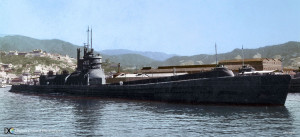Savile Row and Espionage of Japan’s Never-ending Fighter.

People often ask me how I obtain information and intelligence I need for future analysis. To such a question, my answer is quite simple: “It’s synchronicity that matters and leads me to deeper understanding of realities in the world.” The point is to keep on preparing for going to where I just wanna visit. In the beginning of my trip, I used not to be aware why I make just a trip. However, whenever I come to an end of my trip, I grasp why I come there. In between, I’m given opportunities to become aware why I come there thanks to various synchronistic encounters. I could enjoy quite the same experience during my last visit to Fukuoka in the Kyushu region of Japan.
While one of my elder local business partners kindly welcomed me this time, he spontaneously mentioned his father’s personal experiences before and during the WWII. The father, who rarely talked about what he has done in the wartime even to his sons, was allowed to join the legendary espionage school of the then Japanese Imperial Army in Nakano, “Rikugun Nakano Gakko” in 1939.
To my surprising, the Japanese military fighter for espionage left some of his personal experiences on duty I’ve never heard from historians so far, to his son orally. Before the WWII, he was assigned to executing confidential operations in London and other European cities. He was permitted to go on board of a I-Class submarine, a great legend of the Japanese navy history, and left Japan for Europe. The ports of call were Papua New Guinea, Argentine, Cuba and Portugal, the countries and regions which were friendly to Japan.
Experts of Japanese wartime history often refer to the tragedy of the I-29-Class submarine, of which the crew attempted to obtain confidential documents of the then ultramodern military technologies from the Nazis, but failed to get back to Japan due to bombardment by the US armed forces in the Pacific in 1944. The I-19-Class submarine took the route in the Southern Hemisphere via the Cape of Good Hope. The I-Class submarine I mentioned beforehand took another route via the Strait of Magellan, which even prominent historians never found out as far as I know.
And I was astonished to get to know the historical cat that covert actions were executed by a confidential team trained in the “Rikugun Nakano Gakko” even in London, the heart of the British Empire. The alumni of the legendary espionage training center are usually well known for the fact that they were on duty in Asia, particularly China, Korea and South East Asia. But nobody mentioned so far they were active for espionage even in London. The father, the Japan’s never-ending fighter behind the door, intensively worked on espionage in London in civil clothes, while he was transferred to China as soon as the WWII began. In the very end of the WWII, he was instructed to ship arms and ammunition as many as he could to Taiwan, where Chiang Kai-shek & Co. was beginning a civil war against the Chinese Communist Party (CCP).
To check the authenticity of what the father told to him, the son recently visited a tiny shop of tailor on Savile Row in London. The shop keeper kindly brought to him from the underground warehouse what the father, who pretended as if he were a civil person, left: A paper pattern of gentleman’s hat. Over decades and generations, it silently certifies the historical fact that he was there on duty of espionage.
The Japan’s never-ending fighter, who refused to join the Public Security Intelligence Agency after the WWII, never expressed his political support to politicians specifically, seemed to even wait for the next command from someone different from politicians and government officials. For the professional shadow man with great national pride, there must have been only one person, of whom he obeyed instructions.
Now, I’m wondering what he thought on board of the legendary mega-submarine of the Japanese Imperial Navy bound for Europe via the Cape Hone. To add his sincere hope, loyalty and national pride to the collective memory of all the Japanese, I herewith write down what I was allowed to listen to in Fukuoka recently. May the peace prevail in the entire world.
(Written by Takeo HARADA, CEO and Representative of IISIA. All rights reserved.)








